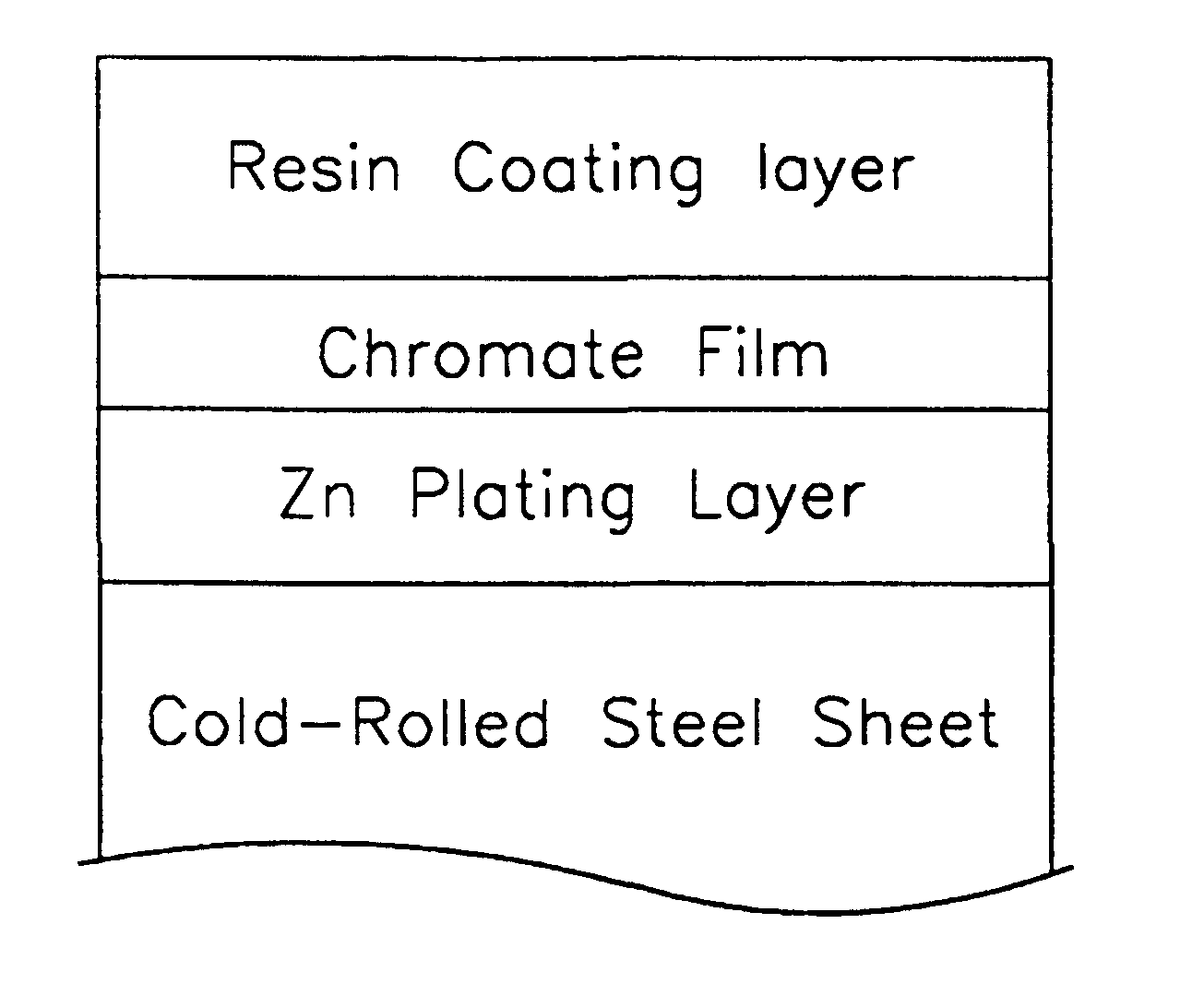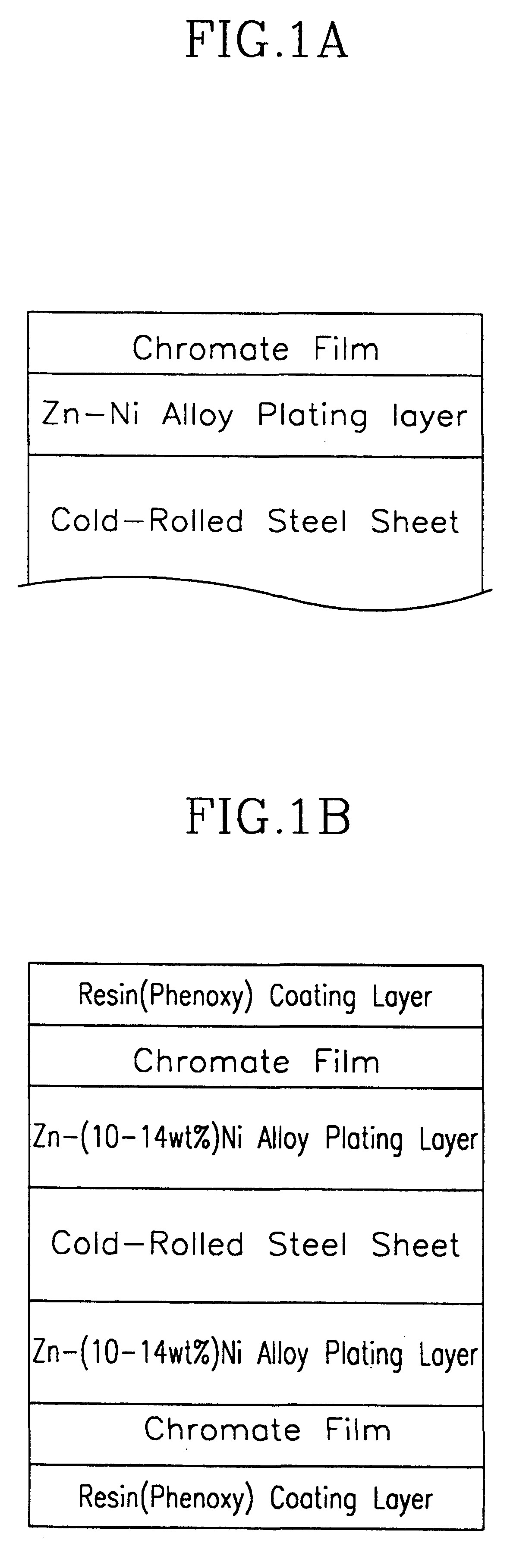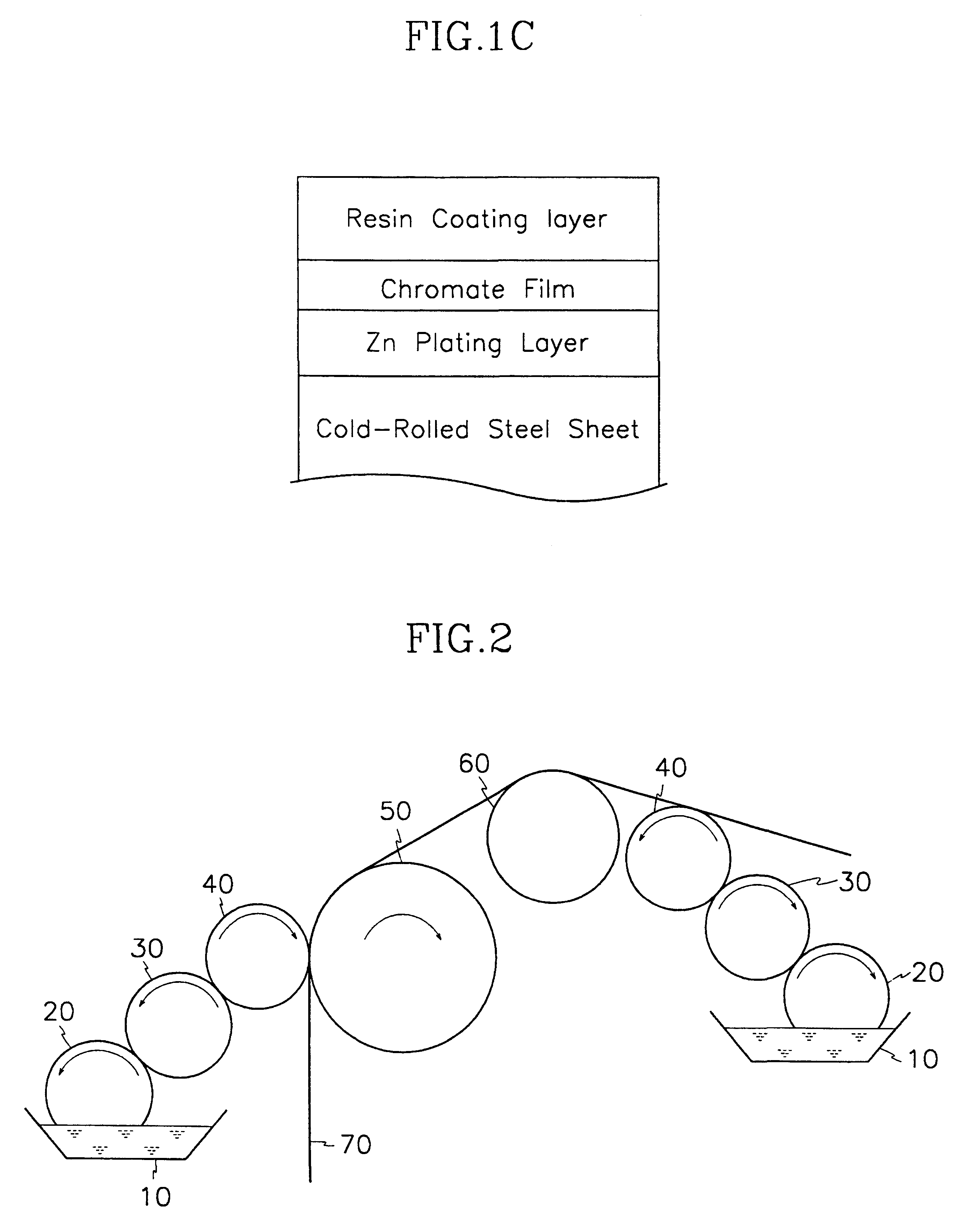Surface-treated steel sheet for fuel tanks and method of fabricating same
a technology of surface-treated steel and fuel tanks, which is applied in the direction of solid-state diffusion coating, synthetic resin-layered products, natural mineral-layered products, etc., can solve the problems of reducing the adherence of resin coating layers to the plating layers, and reducing the use of ternesheets
Inactive Publication Date: 2002-05-14
POHANG IRON & STEEL CO LTD
View PDF12 Cites 16 Cited by
- Summary
- Abstract
- Description
- Claims
- Application Information
AI Technical Summary
Problems solved by technology
However, the ternesheet should have been limited in its use because it contains lead (Pb) harmful to the human body.
However, such a chromate film has poor fuel corrosion resistance so that the zinc content of the zinc plating layer elutes and generates white rusts.
As such large amount of deposition causes for the resulting resin coating layer to be too thick, adherence of the resin coating layer to the plating layer is weakened so that they are liable to be desquamated from each other.
Furthermore, such a structure is not cost effective while bearing poor chemical resistance and poor corrosion resistance.
Minute cracks are formed on the zinc-nickel alloy plating layer to enhance corrosion resistance, but such crack formation bears complicated processing steps.
Furthermore, in such a structure, the chrome content is liable to elute even in contact with minimum amount of water to be contained in fuel, and this results in deteriorated fuel corrosion resistance.
When the amount is smaller than 10 g/m.sup.2, the resulting layer exhibits poor corrosion resistance.
In contrast, when the amount is larger than 40 g/m.sup.2, the layer desquamates from the cold-rolled steel sheet at press forming, and powdering is generated, resulting in poor productivity.
It can be easily noted that as the amount of deposition is larger, the consumption power increases as much in welding process.
When the amount is smaller than 20 g/m.sup.2, the resulting layer exhibits poor corrosion resistance.
When the ratio is lower than 0.4, it becomes difficult to achieve the desired corrosion resistance, and the chrome content is liable to elute due to increase of the soluble hexavalent chrome ions Cr.sup.+6.
In contrast, when the ratio is higher than 0.8, the resulting aqueous solution is shifted into a gel state, and becomes inappropriate for use.
When the concentration is higher than 50 g/l, the chromate solution does not well spread onto the zinc or zinc-based alloy plating layer at roll coating, resulting in a non-uniform chromate film.
In contrast, when the amount is larger than 150 wt % , the ratio of the insoluble trivalent chrome ions Cr.sup.+3 increases, causing impairment in storage characteristic of the chromate solution as well as in corrosion resistance
Method used
the structure of the environmentally friendly knitted fabric provided by the present invention; figure 2 Flow chart of the yarn wrapping machine for environmentally friendly knitted fabrics and storage devices; image 3 Is the parameter map of the yarn covering machine
View moreImage
Smart Image Click on the blue labels to locate them in the text.
Smart ImageViewing Examples
Examples
Experimental program
Comparison scheme
Effect test
 Login to View More
Login to View More PUM
| Property | Measurement | Unit |
|---|---|---|
| Linear density | aaaaa | aaaaa |
| Linear density | aaaaa | aaaaa |
| Linear density | aaaaa | aaaaa |
Login to View More
Abstract
A surface-treated sheet for fuel tanks includes a cold-rolled steel sheet with a low carbon content, a zinc or zinc-based alloy plating layer formed on the steel sheet, and a chromate film coated on the zinc or zinc-based alloy plating layer. The chromate film is formed from a chromate solution. The chromate solution includes a subject solution and an aqueous silane solution in an amount ranging from 5 to 50% by weight of the subject solution. The subject solution contains a chrome aqueous solution where the concentration of chrome is in the range of 5-50 g/l and the ratio of trivalent chrome to the chrome content is in the range of 0.4 to 0.8. Phosphoric acid in an amount ranging from 20 to 150% by weight with respect to the chrome content, fluoric acid in an amount ranging from 10 to 100% by weight with respect to the chrome content, colloidal silica having pH of 2-5 in an amount ranging from 50 to 2000% by weight with respect to the chrome content, and sulfuric acid in an amount ranging from 5 to 30% by weight with respect to the chrome content are mixed with the chrome aqueous solution. The aqueous silane solution contains 2-10 wt % of Epoxy-based silane and has a pH of 2-3. A resin coating layer is formed on one side or both sides of the chromate film. The resin coating layer is formed from a resin solution. The resin solution includes a phenoxy resin solution having a molecular weight of 25,000-50,000, colloidal silica of 10-20 phr with respect to the phenoxy resin content, and melamine resin of 2-15 phr with respect to the phenoxy resin content.
Description
(a) Field of the InventionThe present invention relates to a surface-treated steel sheet for fuel tanks and a method of fabricating the same and, more particularly, to a surface-treated steel sheet which is well adapted for use in forming fuel tanks while exhibiting good performance characteristics in chemical resistance, corrosion resistance and weldability.(b) Description of the Related ArtGenerally, it is required that a steel sheet for fuel tanks should has resistance to corrosion on its outer surface to be exposed to the atmosphere (hereinafter referred to as the "cosmetic corrosion resistance") as well as resistance to corrosion on its inner surface to contact fuel such as gasoline (hereinafter referred to as the "fuel corrosion resistance").A fuel tank is usually made by press-forming steel sheets into cup-shaped upper and lower tank bodies, and welding the bodies to each other by spot welding, seam welding, soldering, or brazing. In this respect, good weldability is also req...
Claims
the structure of the environmentally friendly knitted fabric provided by the present invention; figure 2 Flow chart of the yarn wrapping machine for environmentally friendly knitted fabrics and storage devices; image 3 Is the parameter map of the yarn covering machine
Login to View More Application Information
Patent Timeline
 Login to View More
Login to View More IPC IPC(8): C23C30/00B05D7/14B32B15/04B32B15/08B05D1/28C09D123/04C09D123/10C09D127/12C09D161/28C09D163/00C09D171/10C09D183/00C09D191/06C23C22/26C23C22/27C23C22/28C23C22/30C23C22/32C23C22/37C23C28/00
CPCC23C28/00C23C28/3225C23C28/345C23C30/00C23C2222/20Y10S428/935Y10T428/12799Y10T428/12611Y10T428/12569Y10T428/12014Y10T428/12951Y10T428/12549Y10S428/926Y10T428/31511Y10T428/31942Y10T428/31551
Inventor LEE, JAE-RYUNGNO, SANG-GEOLCHO, SOO-HYOUNSONG, YOUN-KYUNCHANG, SAM-KYU
Owner POHANG IRON & STEEL CO LTD
Features
- R&D
- Intellectual Property
- Life Sciences
- Materials
- Tech Scout
Why Patsnap Eureka
- Unparalleled Data Quality
- Higher Quality Content
- 60% Fewer Hallucinations
Social media
Patsnap Eureka Blog
Learn More Browse by: Latest US Patents, China's latest patents, Technical Efficacy Thesaurus, Application Domain, Technology Topic, Popular Technical Reports.
© 2025 PatSnap. All rights reserved.Legal|Privacy policy|Modern Slavery Act Transparency Statement|Sitemap|About US| Contact US: help@patsnap.com



